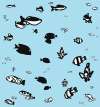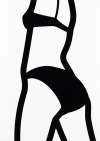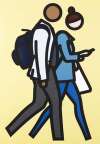Galloping
Horse
The prints in this series are representative of Julian Opie’s masterful graphic reduction of subjects in motion. Galloping Horse references the seminal 19th-century photographer Eadweard Muybridge, who created the first moving images by using a sequence of still photographs of a horse.
Julian Opie Galloping Horse For sale
Galloping Horse Market value
Auction Results
| Artwork | Auction Date | Auction House | Return to Seller | Hammer Price | Buyer Paid |
|---|
Sell Your Art
with Us
with Us
Join Our Network of Collectors. Buy, Sell and Track Demand
Meaning & Analysis
The Galloping Horse series is a set of three prints by Julian Opie from 2013. Each print in the series shows a semi three-dimensional image of a horse galloping, depicted with thick, black outlines and set against plain green backdrops.
The prints in this series are representative of Opie’s most iconic graphic style whereby the artist depicts his subject in an extremely stripped back manner. The colours used in each print are monochrome and the horses are devoid of detail, rendered without light or shadow. Opie depersonalises each image with his slick visual language created with computer-generated technology, so as to encourage the viewer to reconsider how we look at the world. This level of depersonalisation invites the viewer to project their own personal emotions, memories and ideas onto the image, thus filling in the blanks of the narratives that are to be read in Opie’s works.
Since the mid-1990s, Opie has explored the principles of modular variation across artistic media and art historical genres. Opie makes clear the way in which he wishes to offer these prints up as commodities to the viewer by creating multiple versions and possibilities for combination with the same subject. The subject of the horse is depicted in the same rectangular composition across the three prints but is shown in various colour combinations and different positions mid-motion. In his replication of post-industrial modes of production, the artist exposes the dehumanising effects of computer technology. Moreover, Opie parallels the artificial nature of the items represented with his methods and style of working that defy the presence of the artist’s hand.







